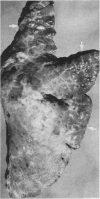Abstract
A swine influenza virus (H1N1) was isolated for the first time in Ontario from pigs one week to one and one-half years old during an epizootic which occurred between January and May 1981. Each herd outbreak was characterized by the sudden onset of marked respiratory distress, usually affecting the entire herd, accompanied by paroxysmal coughing, anorexia, prostration and temperatures as high as 41.5°C and lasting for five to seven days. Morbidity was nearly 100%; mortality was less than 1%.
Hematology, bacteriology and postmortem studies were conducted on 18 pigs from 11 farms. A lymphopenia and acute hematological inflammatory cellular responses characterized by neutrophilia with a left shift, hyperfibrinogenemia and a decreased plasma protein: fibrinogen ratio were found in 50% of the pigs. The cranial lobes of the lung were collapsed and red due to a bilateral cranioventral pneumonia which affected the cranial, middle, accessory and cranioventral aspects of the caudal lobes. Histologically, there was a necrotizing bronchitis and bronchiolitis with a neutrophilic cellular exudate. Pasteurella multocida was the species of bacterium most frequently isolated from the lung; however, mixed cultures of P. multocida frequently combined with Corynebacterium pyogenes and other species were usually identified in the lung and other organs of pigs submitted dead.
Full text
PDF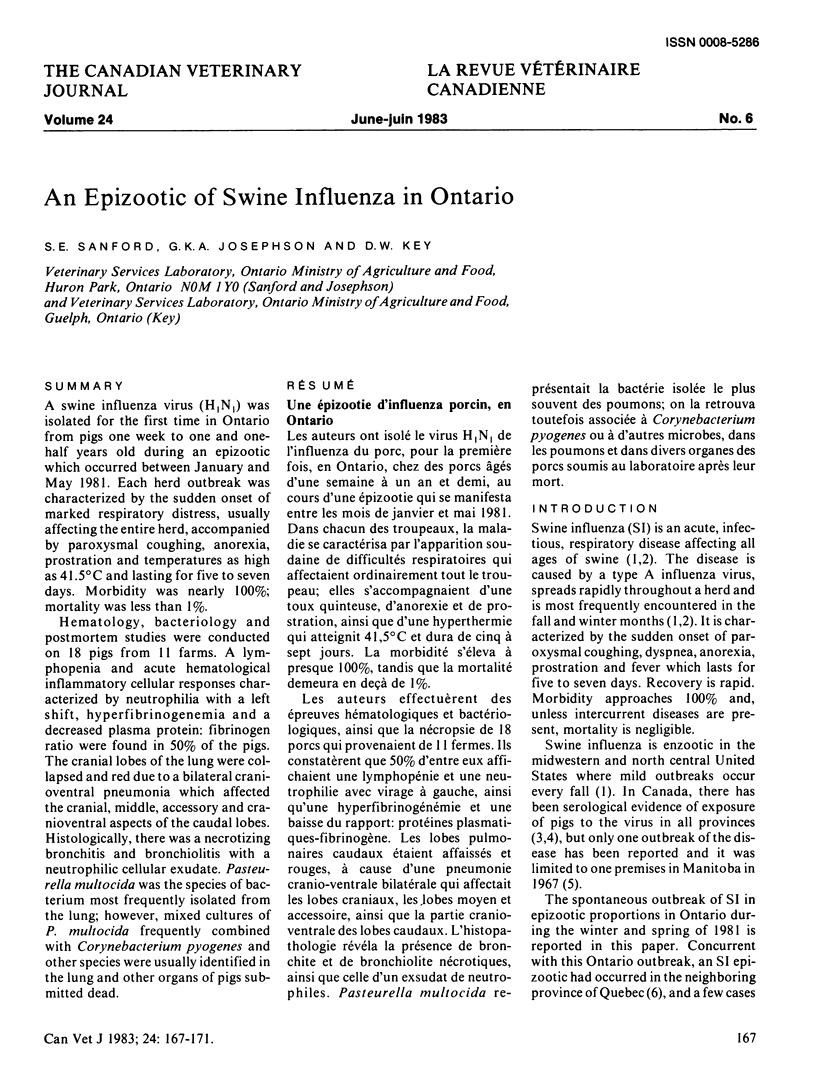
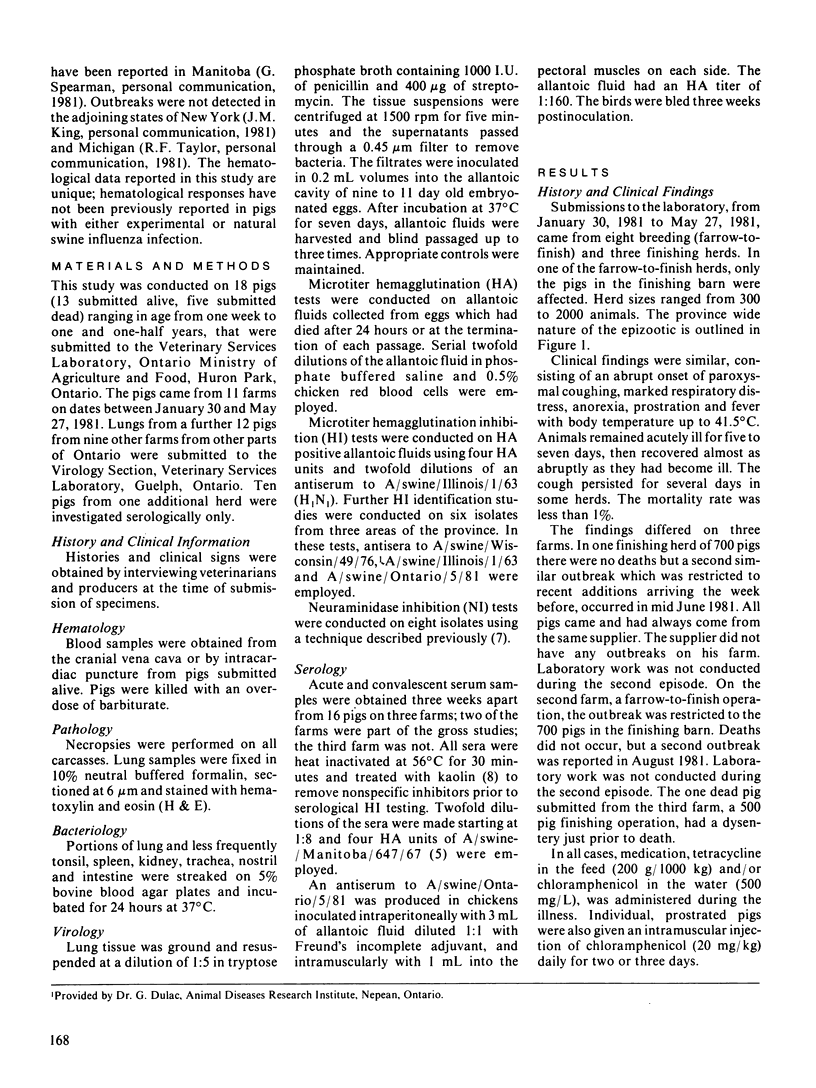
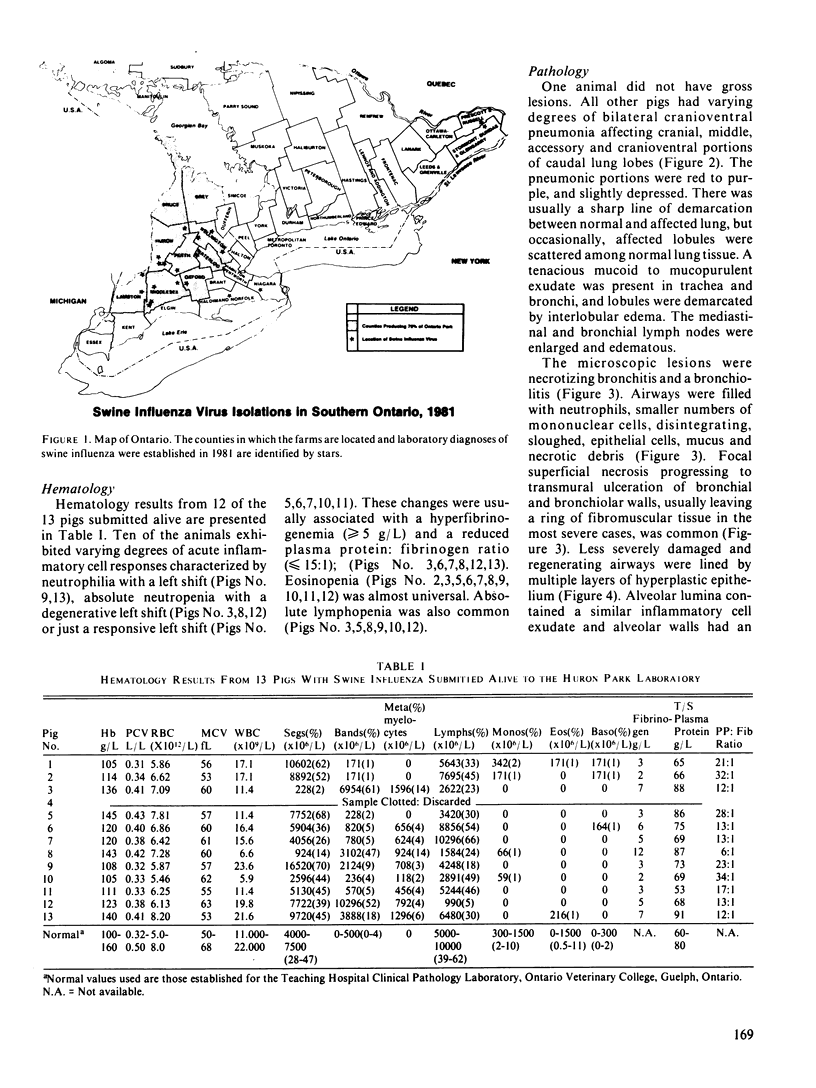

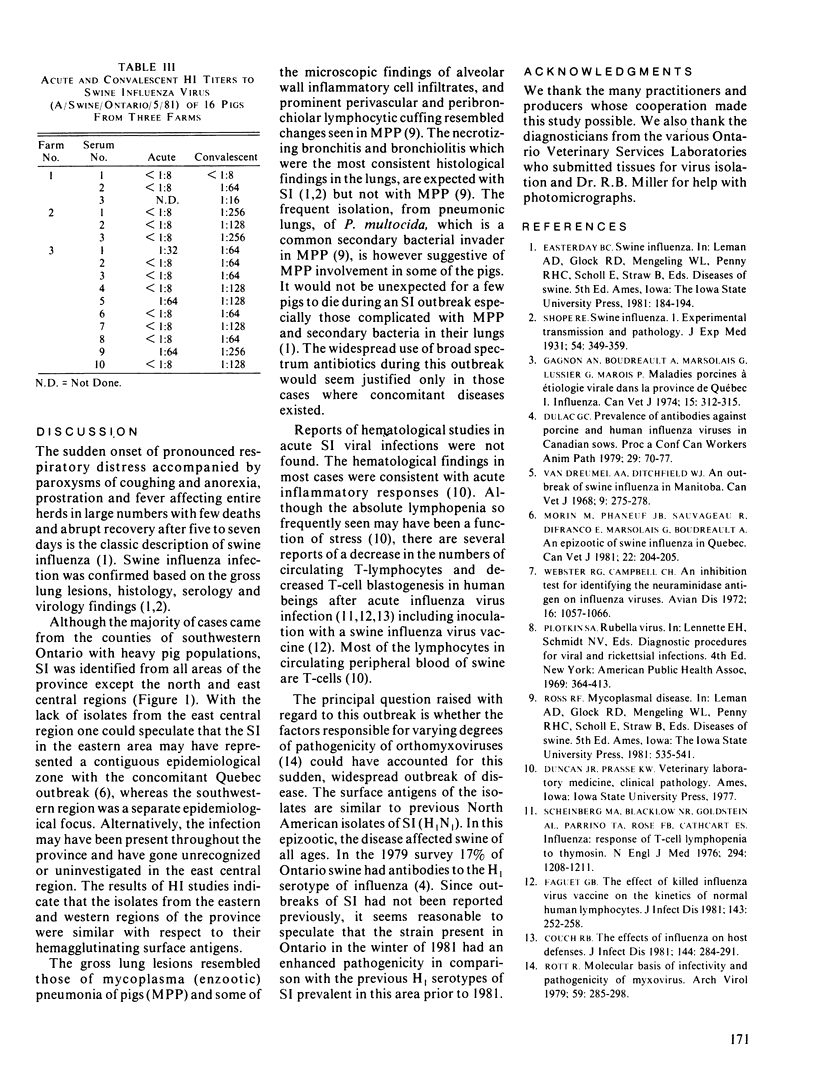
Images in this article
Selected References
These references are in PubMed. This may not be the complete list of references from this article.
- Couch R. B. The effects of influenza on host defenses. J Infect Dis. 1981 Sep;144(3):284–291. doi: 10.1093/infdis/144.3.284. [DOI] [PubMed] [Google Scholar]
- Morin M., Phaneuf J. B., Sauvageau R., DiFranco E., Marsolais G., Boudreault A. An epizootic of swine influenza in Quebec. Can Vet J. 1981 Jun;22(6):204–205. [PMC free article] [PubMed] [Google Scholar]
- Rott R. Molecular basis of infectivity and pathogenicity of myxovirus. Brief review. Arch Virol. 1979;59(4):285–298. doi: 10.1007/BF01317469. [DOI] [PubMed] [Google Scholar]
- Scheinberg M., Blacklow N. R., Goldstein A. L., Parrino T. A., Rose F. B., Cathcart E. S. Influenza: response of T-cell lymphopenia to thymosin. N Engl J Med. 1976 May 27;294(22):1208–1211. doi: 10.1056/NEJM197605272942204. [DOI] [PubMed] [Google Scholar]
- Webster R. G., Campbell C. H. An inhibition test for identifying the neuraminidase antigen on influenza viruses. Avian Dis. 1972 Oct-Dec;16(5):1057–1066. [PubMed] [Google Scholar]
- van Dreumel A. A., Ditchfield W. J. Case report. An outbreak of swine influenza in Manitoba. Can Vet J. 1968 Dec;9(12):275–278. [PMC free article] [PubMed] [Google Scholar]



